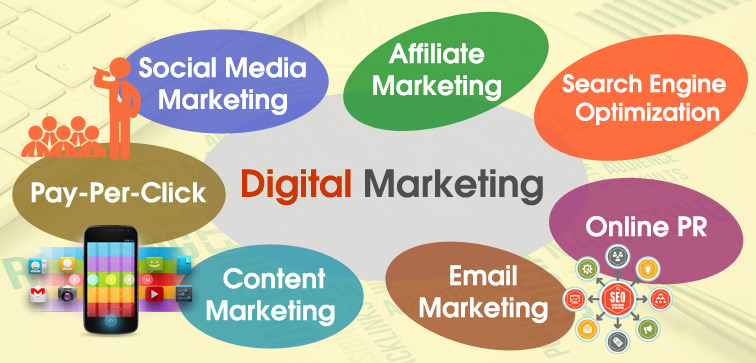
1. Global reach
Traditional marketing strategies like billboards, TV ads, and cold sales calls are limited by geography. But with digital marketing, businesses can access a global audience across locations and time zones. Instead of limiting your reach to people in your community, you can target potential customers in your state, country, and even globally.
Traditional marketing tactics could cost a fortune for companies to promote themselves across multiple different markets. Digital media strategies like social media, content marketing, and email marketing make it easy for businesses to reach potential customers around the world. With a larger pool of potential customers, you can easily scale up your efforts to build your brand and increase sales.
2. Cost efficiency
Marketers succeed when they’re good stewards of their budgets. Fortunately, investing in digital marketing can make the most of even a modest budget.
For example, a typical print ad can cost upward of $2,000 — and it’s also difficult to measure the precise number of sales generated as a result of a print ad, even with tactics like unique tracking links or QR codes. Modern strategies like email marketing can help businesses generate an average of $42 for every $1 spent.
Most digital marketing strategies have a low startup cost. For example, search engine optimization (SEO), social media, and content marketing are some of the most effective ways to promote your business online, and they cost nothing but your time and talent.
Even on the paid marketing front, digital channels don’t usually have minimum budget requirements for social media ad buys or search engine marketing (SEM) campaigns. Whatever your budget, you can create a campaign that’s perfectly targeted to your potential customers and set a spending limit so you don’t spend more than your budget allows.
3. Measurable results
Digital marketing provides measurable results
Not only is digital marketing more affordable than offline marketing tactics — it’s also highly measurable. Traditional channels like print, TV, and radio ads can be effective, but it’s very challenging to track who responds to your messages.
With digital marketing, you can track nearly every touchpoint users have with your brand. Whether it’s social media views, ad clicks, email opens, or organic page views, every aspect of digital marketing is highly trackable. It’s much easier to prove the return on investment (ROI) of your digital marketing efforts as a result, which helps you better understand the results you’re generating and where to keep investing.

4. Effective targeting
With traditional marketing, you have little control over who sees your content. Even if you pay for a targeted ad in a niche magazine, you can’t guarantee that everyone reading that magazine is your ideal customer.
However, digital marketing allows you to pinpoint the best audience for your messages using online audience and targeting information. You can also collect data from your digital campaigns to see which content works best for certain types of customers. If you’re still learning about your customers’ preferences, these insights can help you refine your campaigns over time.
5. Increased engagement
Traditional marketing methods only allow for one-way interactions. Your business can communicate a message to your audience — but there’s no clear pathway for the audience to respond or take action directly. This puts a barrier between your brand and the people you’re trying to reach, which can reduce engagement.
Digital marketing presents you with the opportunity to have real conversations with your customers. Whether through email, SMS, social media, or blog comments, you can get feedback from your customers every step of the way. This gives you more opportunities to delight customers, answer questions, and fine-tune your campaigns based on their input. It doesn’t hurt that these conversations also provide you with more customer touchpoints, which can increase conversions and sales.
6. Flexibility
Digital marketing gives you the flexibility to choose from different channels and strategies. It’s also flexible enough that you can adjust your approach over time as you learn more about what works for your audience and business.
7. Improved conversion rate
When a customer converts, they take a desired action. That might be subscribing to your email newsletter or making a purchase. Your conversion rate measures the percentage of customers who take that desired action. Generally speaking, the higher your conversion rates, the more successful your marketing efforts.
Traditional marketing methods have just a 1.7% lead-to-close rate, which means fewer than 2% of all leads become customers. However, digital marketing has a 9.9% lead-to-close rate, which is nearly six times higher than traditional marketing. If you want to convert more prospects into customers, digital marketing is the way to go.
Your email address will not be published. Required fields are marked *